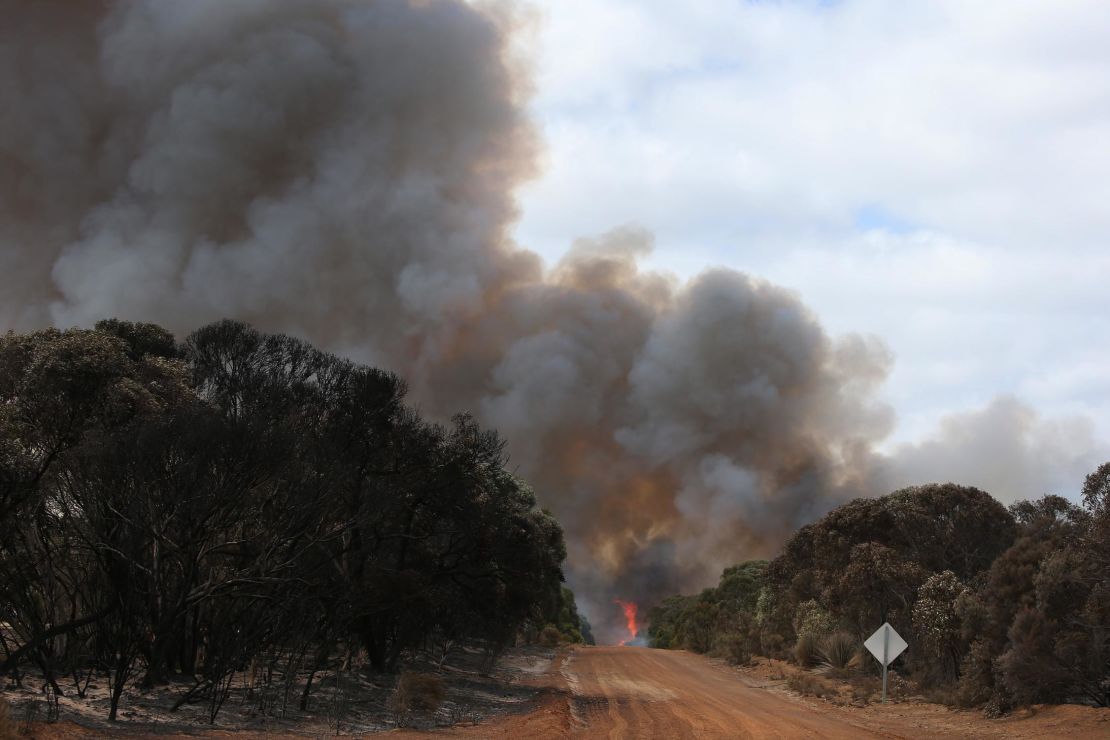Australia’s devastating recent wildfires thrust as much smoke into the Earth’s atmosphere as a powerful volcanic eruption, causing cooling over the region’s oceans with potentially long-lasting impacts, according to the authors of a new study.
Dozens of people died in Australia’s 2019-2020 bushfire season, which was one of the worst on record. More than 10 million hectares of land burned and over a billion animals are estimated to have died, with many species pushed close to extinction.
Using data from two satellite missions, scientists found “record-breaking AOD (aerosol optical depth) levels resulting from smoke from the Australian bushfires that were injected into the stratosphere,” according to the study, conducted by researchers at the Israel Institute for Biological Research and the Weizmann Institute of Science.
In the early months of 2020, smoke from the fires was carried 35 kilometers (about 22 miles) up to the stratosphere, the atmosphere’s second layer, far above where commercial planes fly.
Aerosols in the atmosphere’s lowest layer – the troposphere – have a much shorter lifetime, lasting anywhere from minutes to weeks. But there are no rain clouds in the higher stratosphere to wash out pollutants – meaning aerosols there can last months or even years, said the study, published Thursday in the journal Science.

This is typically seen when explosive volcanic eruptions send aerosols high into the stratosphere, which can cause meteorological changes in precipitation or soil conditions. But lacking the incredible blast power of volcanoes, it’s much rarer for wildfire smoke to reach the stratosphere.
After months of massive fires in Australia, aerosol levels over the southern hemisphere increased by more than 50% compared to the averages of the previous 17 years, the researchers said. Levels “even eclipsed those measured after the eruption of Mount Pinatubo, the second-largest eruption of the 20th century.”
Mount Pinatubo erupted in the Philippines in 1991, ejecting huge amounts of ash, smoke and sulfur dioxide high into the stratosphere. For more than two years afterward, strong stratospheric winds spread these aerosol particles across the world, significantly cooling the Earth’s surface by absorbing sunlight. The average global temperature dropped by 1 degree Fahrenheit (0.6 degrees Celsius) in the 15 months after the eruption, according to NASA.
In photos: Bushfires rage through Australia
The effects of the Australia fires are already becoming apparent, less than a year after the end of the wildfire season. The large amounts of smoke emitted meant that less solar energy reached the Earth’s surface, cooling temperatures by 1 watt per square meter over cloud-free seas, said the study. By absorbing sunlight, the smoke may also have warmed the stratosphere and changed its circulation.
Several factors may explain why the smoke reached so high into the stratosphere. The fires were intense and on a large scale, spreading across numerous states, and burned for months on end – creating greater amounts of smoke than individual or spot fires. The fires also took place at higher latitudes, where the tropopause – the boundary between the troposphere and the stratosphere – is shallower, making it easier for the smoke to cross into the higher layer.
The wildfire season began in June 2019, and continued through the following spring. Most fires in New South Wales state were extinguished completely by March 2020, with the last fire of the season put out in May in Western Australia.
The fires killed 33 people, including nine firefighters, and destroyed more than 3,000 homes nationwide, according to the Australian Parliament.
Australia experiences a fire season every summer – but the 2019-20 season came during a major heatwave and one of the country’s worst droughts in decades, fanning the flames and making firefighting conditions particularly difficult. Experts also say climate change has worsened the scope and impact of natural disasters – weather conditions are growing more extreme, and for years, the fires have been starting earlier in the season and spreading with greater intensity.















































































































